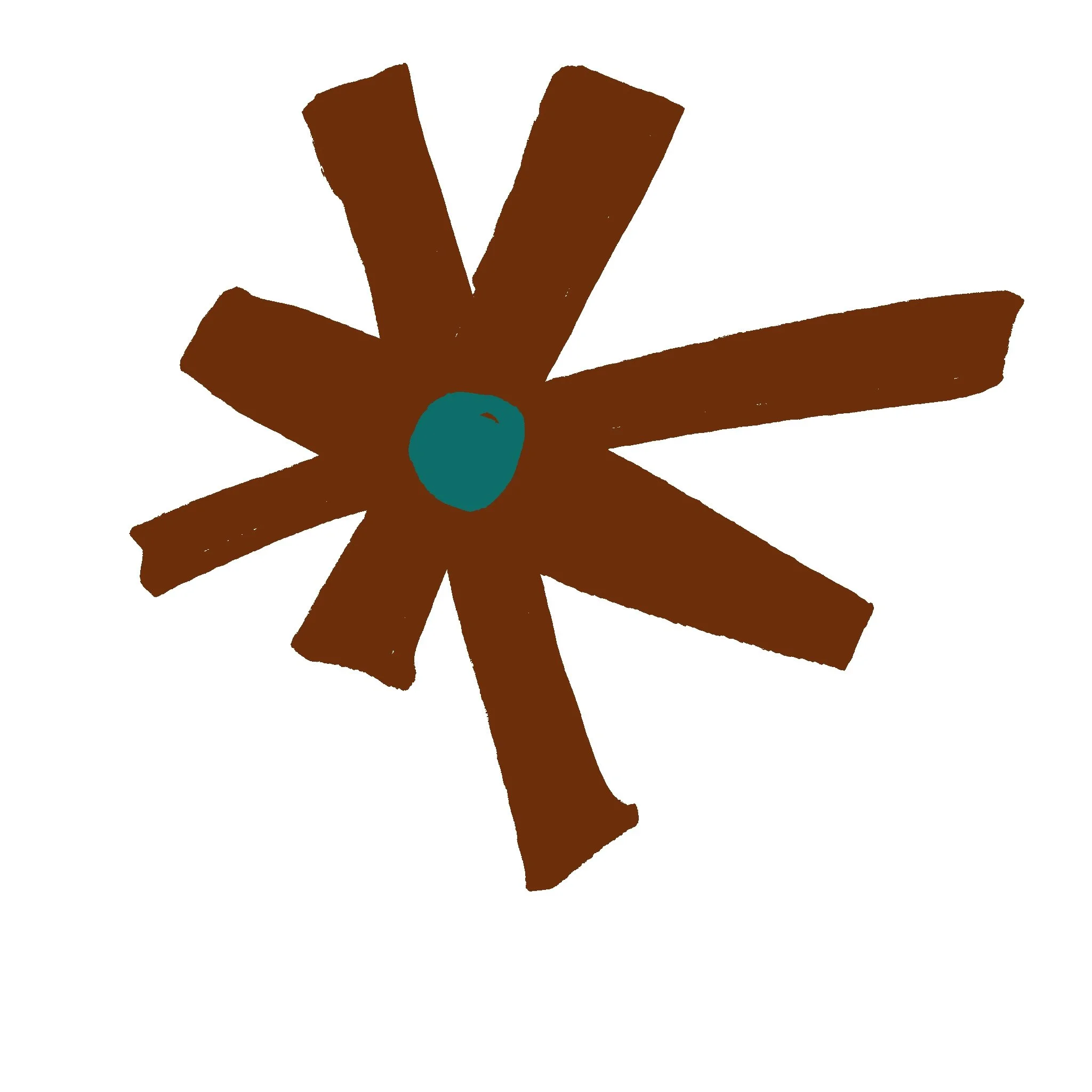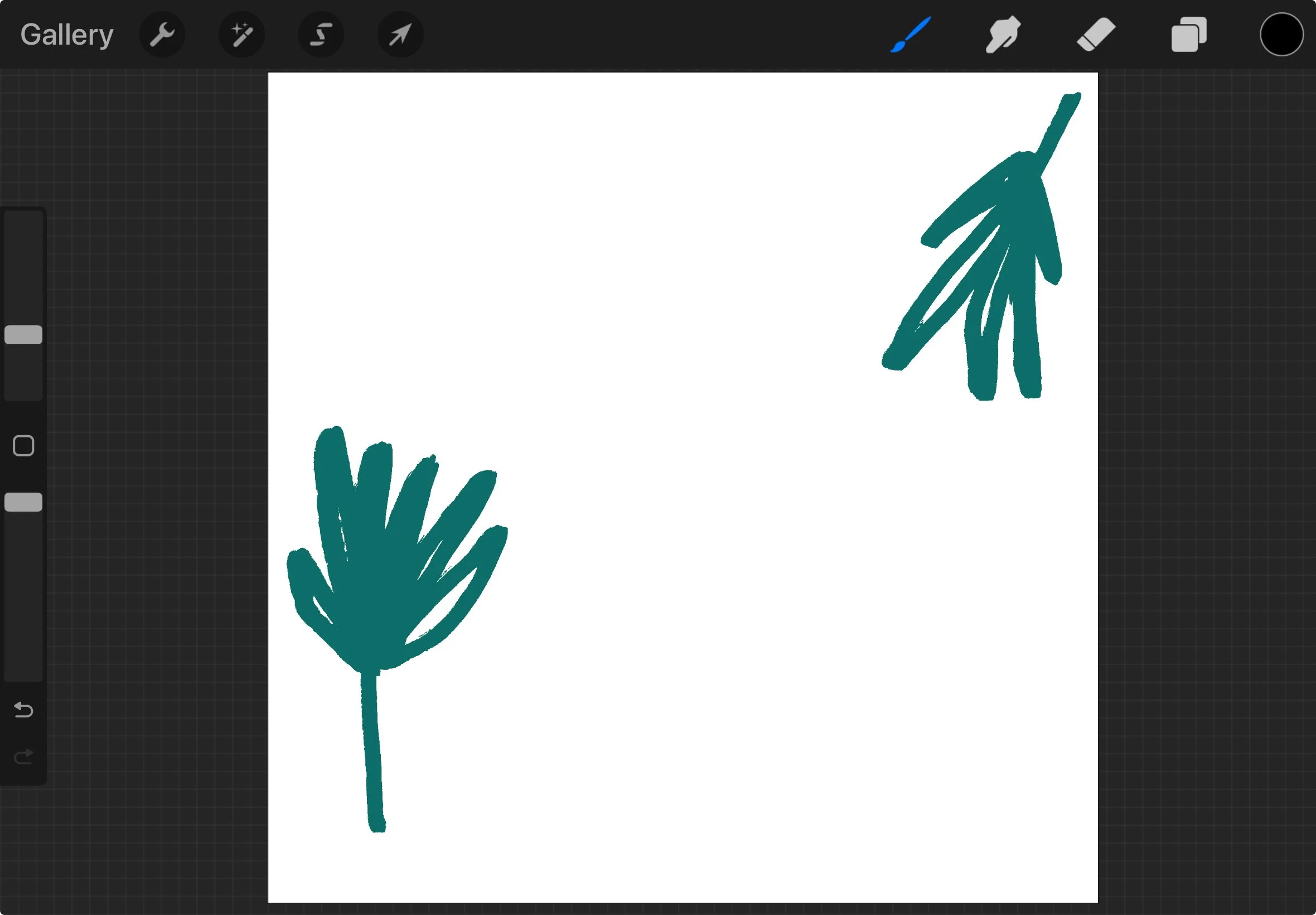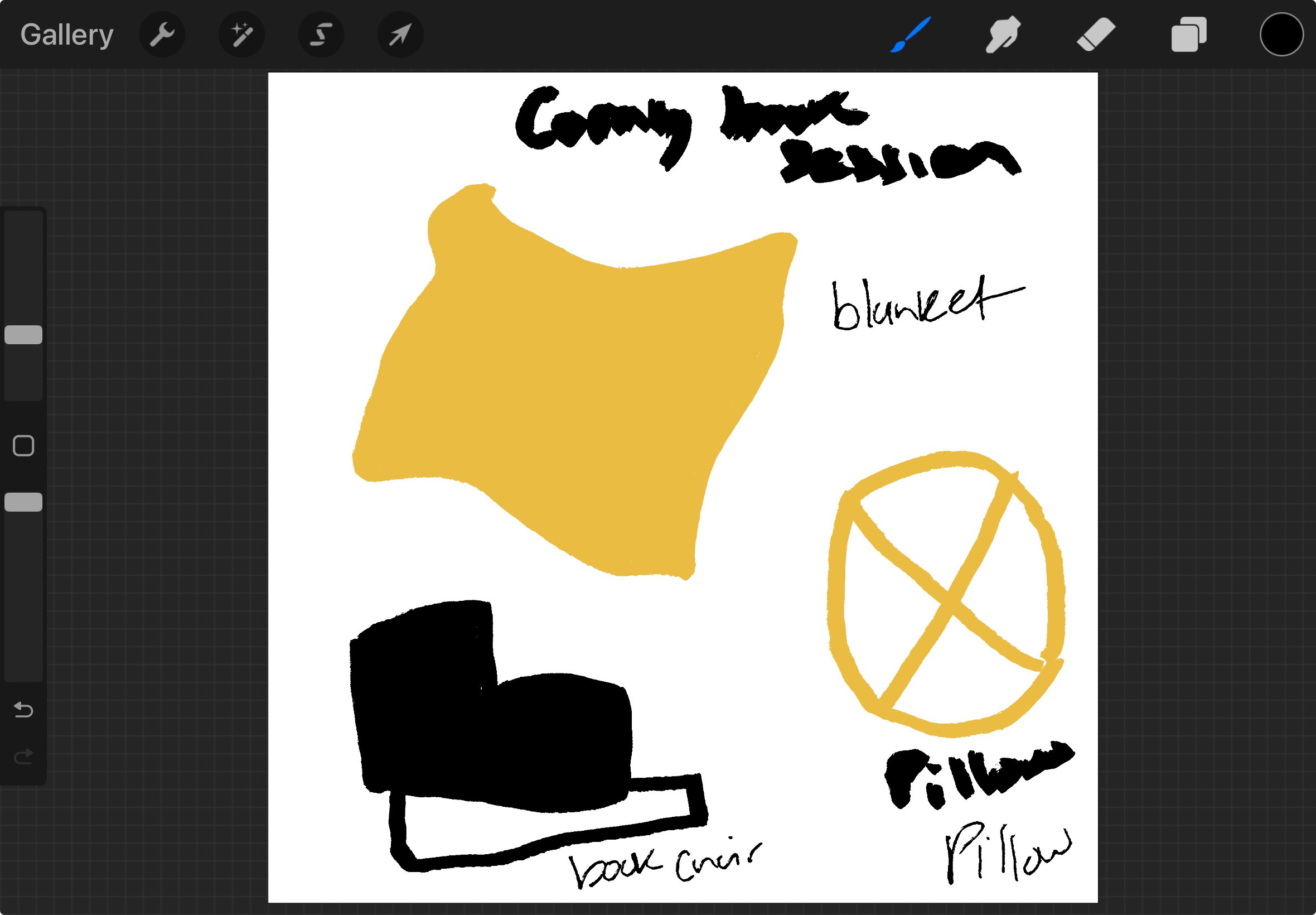5 Unconventional Choices I'm Making While Creating My First Pattern Licensing Collection
Content Pillar: CREATE
Reading Time: 5 minutes
Status: First licensing collection in progress
TL;DR: I woke up with a pattern collection downloaded in a dream, sketched it sans glasses in 40 minutes, and I'm using Python tools I built myself instead of Adobe subscriptions. Building in public, owning my tools, honouring divine inspiration. First licensing collection incoming.
The pattern motif i dreamt of.
How It Started
You know that feeling when you wake up and you know you dreamed something important, but it's already slipping away? That wasn't this morning.
This morning, I woke up with a pattern motif playing in my mind like a movie that wouldn't stop. Not vague inspiration - an actual, specific floral motif in motion. It felt like God whispered into my dream, "Here's a pattern for you."
And friends, this is not the first time. My best patterns? The ones I'm proudest of? They all started as dreams.
So I did what any designer who respects divine downloads would do - I grabbed my iPad sans glasses and started drawing.
🎨 The Flow State (Or: Drawing Blind on Purpose)
“No glasses. No overthinking. Just hand to screen, brain to canvas.”
I was in full flow state, visually brain-dumping every motif I could pull from that dream before the tap ran dry. This was a time-sensitive assignment and I knew it - divine downloads don't wait for you to find your glasses and get your coffee.
Here's what I was slyly excited about (designer brain never fully turns off, even in flow): what drawing without glasses does to the design process.
Without sharp vision, you can't get precious about details. You can't overthink line weight. You can't second-guess yourself into paralysis. You just... create. Loose. Intuitive. Uninhibited.
The motifs poured out:
The main floral from the dream
Supporting flowers and leaves
Mark-making for texture
Complementary shapes and elements
All captured in the time-lapse - I intentionally picked a tool that auto-records as opposed to Affinity to decrease friction from dream to canvas. Still working smarter, not harder.
"Divine downloads don't wait for you to find your glasses and get your coffee."
Procreate workspace, motif sketches without the layer panel.
🎯 The Vision: Autumn Floral Book Lover
Target Audience:
The warm-and-cozy, book-loving, flower-appreciating, seasonally-aware reader. You know the one - she looks forward to pumpkin spice lattes unironically. She switches her décor with the seasons. She has a reading nook with a view and dreams of the perfect cozy blanket.
Vibe Check:
Warm, cozy, autumnal, literary, floral
Colour Inspiration:
Brown, yellow, and teal came to me first (wild combination, I know, but trust the vision). I'll need to refine the palette to match the autumn/cozy brief, but that's the starting point.
End Products:
Warm blankets and fleeces
Upholstered furniture
Cushions and throw pillows
Basically, anything that makes a reading nook feel like a hug.
📋 COLLECTION SNAPSHOT
Target: Cosy book lovers who embrace autumn
Vibe: Warm, literary, seasonal
Colours: Brown, yellow, teal (to be refined)
Products: Blankets, upholstered furniture, cushions
Status: First licensing collection in progress
The sketches of possible surface pattern destination products.
Stage 2: Design Thinking Documentation
Once the visual download was complete (and I could finally put my glasses on), I wrote down everything - the target audience, the vibe, the end products. This is crucial because pattern design without strategy is just pretty pictures. Pattern design WITH strategy? That's licensing gold.
Then reality check moment: "Do autumn flowers even exist?" laughs in Southern Hemisphere Of course they do - it's spring somewhere in the world right now. This is my first time drawing specifically autumn florals, so we're learning together.
💻 What Happens Next: My Technical Workflow
Here's where it gets interesting - I'm mixing traditional design methods with some exciting new tools I've been building.
The Plan:
1. Mix motifs - Take these individual elements and create different pattern tosses on fresh canvases
2. Python-powered colour exploration - Use the recolouring tool I built (yes, IN PYTHON, on my FIRST DAY learning to code - ChatGPT is absolutely influencing my design flow and I'm here for it). This will help me generate multiple colourway options quickly.
3. Refine in Affinity Designer - Move to vector-based design for all colourways. This is essential for furniture applications that need to scale without losing quality. This is the BEST stage to introduce the Python recolouring tool - post-sketch, pre-refining the complete repeat pattern. Then I'll refine in Affinity Suite with all colourways in vector format.
4. Prepare for licensing - This will be my first licensing agreement! Time to dust off those contracts from Bonnie Christie's Surface Designer course.
💭 "But Why Not Just Use Adobe Recolour?"
Glad you asked.
The Short Answer: I can't afford Adobe's subscription model, and honestly? I'm okay with that.
The Real Answer: I prefer owning my tools rather than renting them. It's a business ethics thing for me. Adobe's subscription model feels like being perpetually fleeced - you never actually own anything, and the moment you can't pay, your entire workflow vanishes.
Will Adobe sponsor me after saying this? Probably not. Am I losing sleep over it? Not even a little.
I genuinely love Affinity. Yes, it's complicated. Yes, there's a learning curve. But I own it. And more importantly, by building my own Python tools, I'm getting acquainted with the coding language that AI is actually written in.
This is AI literacy on a whole new level.
As a designer, staying up to date with your tools isn't just about learning the latest software features. It's about understanding the foundational technology that's reshaping our entire industry. When you can write the code that powers your tools, you're not just using AI - you're understanding it, customising it, making it work for YOUR specific workflow.
That's not just cost-effective. That's future-proof.
So while others are paying monthly subscriptions for recolouring tools, I'm investing time once to build something I own forever, that I can modify whenever I want, and that teaches me skills that will compound for the rest of my career.
That's the long-term vision. And if that means Adobe never calls? I'll be over here, building my own tools, owning my workflow, and sleeping just fine.
The truth will set you free - free from subscriptions, free from gatekeepers, and free to build a business that actually aligns with your values. 😊✨
🛠️ MY TOOL STACK
Tool | Purpose | Why
Procreate | SketchingAuto time-lapse, | friction-freeCustom
Python Tool | Recolouring I built it. | I own it. Forever.
Affinity Designer | Vector refinement | One-time purchase, total control
Disclaimer: my recolour code tool looks nothing like this code, I am on day 1 coding people.
Why This Matters
For the CREATE pillar: This collection represents a new product direction for me - pattern licensing for home décor. Not just digital products, but actual physical goods that people will curl up with.
For the BUILD pillar: I'm not just learning Python for fun - I'm building sustainable, owned infrastructure for my design business. No subscriptions. No gatekeepers. Just skills and tools I control.
For the BELIEVE pillar: I trust divine inspiration. When God gives you a pattern in a dream, you honour that gift by bringing it into the world excellently. And sometimes that means drawing without your glasses at 5am because the assignment is time-sensitive. Sometimes it means building your own tools because the industry-standard option doesn't align with your values.
"When God gives you a pattern in a dream, you honour that gift by bringing it into the world excellently."
So we got to be faithful with what he gives us too.
The Journey Continues
I'm documenting this collection from sketch to licensing agreement. You'll see:
Time-lapse videos of the creation process
Colour palette development (Python-powered)
Pattern repeat construction
The actual licensing journey (contracts, negotiations, all of it, (hopefully*))
Because building in public means showing the whole process, not just the highlight reel.
Question for you: Do you trust your creative dreams and intuitions? Have you ever created something while deliberately removing your usual controls or tools? Drop a comment - I'd love to hear your stories.
Next post preview: "Python for Designers: The Recolouring Tool I Built on Day 1 (and How You Can Too)"
P.S. - Call: "God is good!" Response: "All the time!" Because we're bragging in the Lord around here, and a surface pattern collection birthed from a dream in under an hour, drawn without glasses in pure flow state? That deserves some praise. 🙏✨





